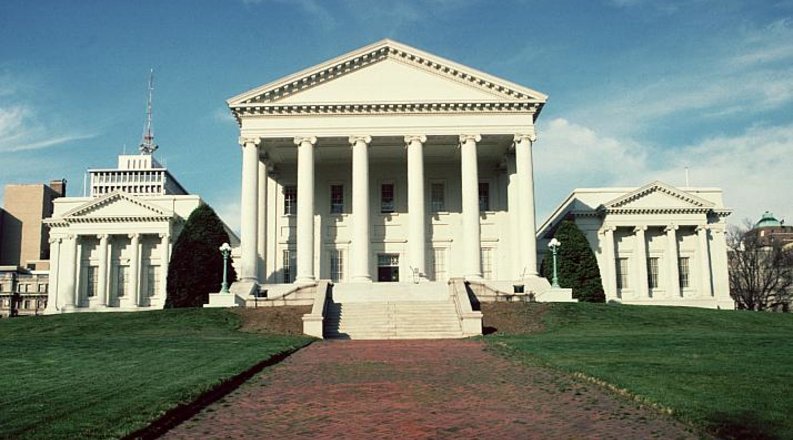By Jonah Grinkewitz
There are positive takeaways from Old Dominion University’s ninth annual State of the Commonwealth Report. Virginia’s economy and population continued to grow in 2023 and a record number of people were employed and in the labor force, surpassing pre-pandemic levels.
But the report, produced by ODU’s Dragas Center for Economic Analysis and Policy, also raises questions about the commonwealth’s future. For example, Virginia’s economic growth lagged its neighbors to the south, and more of its residents are moving to other states.
In addition, Virginia’s economy did not outpace the nation’s, and much of the commonwealth’s economic growth is concentrated along the I-95 corridor between Richmond and Northern Virginia.
“The Virginia economy should grow in 2024, but work remains to be done to match the economic performance of our peers,” said Robert M. McNab, director of the Dragas Center and lead author of the report.
McNab said that data from regional labor markets illustrates the sluggishness of Virginia’s economic performance compared to other Southern states. Richmond (5.9%) and Hampton Roads (1.2%) both grew slower than the metropolitan areas of Raleigh, North Carolina (9.9%), Charleston, South Carolina (10.2%), and Jacksonville, Florida (10.9%).
Outward domestic migration is also a challenge. Nearly 24,000 more people left Virginia than moved to the commonwealth in 2023, a level not observed since 2015.
“Slowing population growth (or an outright decline in the resident population) may be a warning sign about a state’s future economic prospects as residents may be ‘voting with their feet’ and seeking improved economic opportunities elsewhere in the country,” the report reads.
Despite having a record 4.6 million people in the labor force in October 2023 – about 300,000 more than in February 2020 – Virginia had more job openings this past year than it did unemployed people. In September 2023, approximately 100,000 Virginians quit their jobs and about 117,000 were unemployed. In the same month, employers reported around 263,000 job openings.
“While this is not a problem unique to the commonwealth, we need to move forward with policies to improve labor force participation,” McNab said.
After outpacing the nation’s growth in 2022, Virginia failed to do so again in 2023. The report also suggests that the returns from federal spending – which increased again in 2023 – were muted compared to previous decades.
McNab said the report provides an opportunity to find solutions to the challenges that lay ahead.
“As we enter 2024, we should think about how the commonwealth can grow in the long run,” he said.
McNab said those ways include:
- Ensuring that Virginia’s college graduates have the skills to meet the needs of employers.
- Investing in mental health, childcare and health insurance to improve labor force participation and quality of life.
- Addressing the opioid crisis and the lingering impacts of the pandemic on student learning.
- Putting money into infrastructure projects that promote growth across the state.
The 2023 State of the Commonwealth Report has five chapters:
Virginia’s Economy Grows, but Questions Linger about the Future: Economic activity increased in 2022 and 2023. A record number of Virginians were at work or looking for work. Labor force participation increased above pre-pandemic levels. However, this news is tempered by the fact that Virginia grew slower than the nation and Virginians continue to migrate out of the commonwealth.
A Recovery in Progress: Virginia’s GO Virginia Regions: As we conclude 2023 and look forward to 2024, the economic fate of the commonwealth looks increasingly bifurcated, with economic activity and population concentrated in a handful of regions. Now, with evidence of a “soft landing” from the turbulence of 2022 increasingly evident, the open question remains: can we spur economic growth across the state?
Virginia is for Veterans: Approximately one in 10 Virginia adults ages 18 years and older is a military veteran. The commonwealth only ranks behind Alaska in the proportion of the adult population identified as veterans. The presence of military veterans and retirees not only provides talents to employers, but also generates billions of dollars of payment transfers and expenditures by the federal government throughout Virginia.
Death and Dying in Virginia: The report examines the demand for hospice care by Medicare beneficiaries as well as the changing nature of hospice care suppliers as more than two-thirds of hospices nationwide operate as for-profit entities. The authors ask: what is the state of end-of-life care across Virginia?
Virginia’s Hotel Industry Grows, but Change is Coming: This chapter assesses the performance of the commonwealth’s hotel industry and discusses the challenges it faces in 2024 and beyond.
For more than two decades, the Dragas Center for Economic Analysis & Policy of ODU’s Strome College of Business has produced research reports as a service to decision-makers and thought leaders in Hampton Roads, inserting data into discussions that affect residents’ daily lives.



